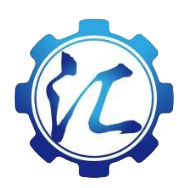In this evolving landscape of manufacturing, every business strives to achieve optimized and streamlined production processes while keeping costs low. If you wonder about this, then continue this read. In this situation, Design for Manufacturing (DFM) plays a vital role. DFM is an innovative design approach that simplifies manufacturing processes, reduces production costs, and ensures product quality and consistency. If, by any chance, you are looking for these answers, then allow us to enlighten you. In this guide, we will explore the design of manufacturing and ways to streamline the product development process. But before we jump into the core, let’s first explore from the basics.
What is Design for Manufacturing (DFM)?
Design for Manufacturing (DFM) is an approach that focuses on the optimization of a part, product, or component design to create it more efficiently and affordably. DFM involves efficient product design, making it more cost-effective to implement adjustments during the design phase rather than later in production. Because early tests allow manufacturers to identify and resolve issues before production begins.
Why is Design for Manufacturing Important?
For any business aiming to create profitable products, DFM is vital for ensuring efficiency, speed, and high production rates. It is believed that approximately 70% of the manufacturing cost of a product depends upon the design decisions made in the early stage of manufacturing. For example, the material or method of manufacturing. Therefore, it’s a great way to reduce the cost of production while maintaining product quality and consistency. Further, it also helps improve product design, contributing to weight management and streamlining the production process.
Design for Manufacturing Principles
With an understanding of and applying the core principles of DFM, you can create well-optimized and efficient designs for production. Here are the main principles of DFM:
- Reduce the number of components.
Product development is like a puzzle; the fewer the pieces, the easier it is to assemble them. This same principle applies to manufacturing. Every part is recognized as a point of complexity, cost, and potential for errors. However, reducing the number of components means:
- Reduced material expenses
- Fewer parts to acquire and manage
- Eliminate quality control steps
- Shorter assembly time
- Lower chance of defects or errors
- Standardize Parts and Materials
Whenever reasonable, choose off-the-shelf parts. This approach helps you avoid redesigning the component for each new project, which will make your inventory management more effortless. It also helps cut procurement costs and keeps production consistent. Furthermore, reusing similar parts for various products simplifies things and brings beneficial economies of scale. By steering clear of tailored components, you can save time and money on tooling and setup.
- Modern Design
Modular design is about crafting individual subassemblies, or modules, that can easily be assembled to shape the final product. It’s a fantastic approach that adds flexibility and creativity to the design process!
By breaking down the production into smaller or self-contained modules, you’ll be able to create flexible systems where you can test out each part independently. Think of them as giant LEGO pieces that easily assemble and disassemble parts. This allows you to customize the design and streamline repairs with faster upgrades without scrapping the entire product.
- Tolerances and Specifications
Defining very tight tolerances in every area might be very pleasing, but achieving such precision can be both unnecessary and costly in the long run. Instead, consider applying tolerances thoughtfully in your design. You can allow for looser fits where it makes sense and reserve tighter tolerances for critical interfaces. This approach helps to minimize rework and scrap rates while also helping to keep costs manageable.
We conduct a tolerance analysis to ensure that parts fit together appropriately, taking into account the potential extremes of manufacturing variations. For example, we may carry out an analysis to verify that a plastic part produced from a mold with a tolerance of a few thousandths of an inch will still align seamlessly with other components, preventing gaps or interference.
- Optimized Assembly
These principles may overlap the boundaries between DFM and DFA, but they are essential parts of creating designs that stand the test of time. Optimizing assembly can really make a difference, including:
- Create components that easily align and are assembled from a single perspective, preferably top-down.
- Use symmetrical parts to reduce direction challenges.
- Integrate self-locating features, like tabs, slots, or grooves, to reduce handling requirements.
- Add self-fastening components, such as snap fits or press fits, to remove the necessity for extra fasteners like screws or adhesives.
- Limit the requirement for specialized tools to cut tooling costs and enhance production line versatility.
Conclusion
Design for manufacturing (DFM) is not a process; it’s a requirement that any business should follow to upgrade its product design for better production. It’s an approach that empowers businesses to create cost-effective and high-quality products. Companies can streamline their production by focusing on the principles of the DFM, such as minimizing errors and improving scalability by reducing components, standardizing parts, embracing modular designs, and optimizing tolerances.
However, in today’s competitive manufacturing landscape, implementing the right DFM principle is essential for staying ahead of the competition. Whether you’re developing a newer product or refining an existing one, a great DFM-first approach can lead you to the way to innovation, sustainability, and profitability.
If you want to streamline product development, then take a step forward in the journey and start integrating these principles into your product with industry experts Zhonghui Die Casting. Contact today for enhanced design for manufacturing.

